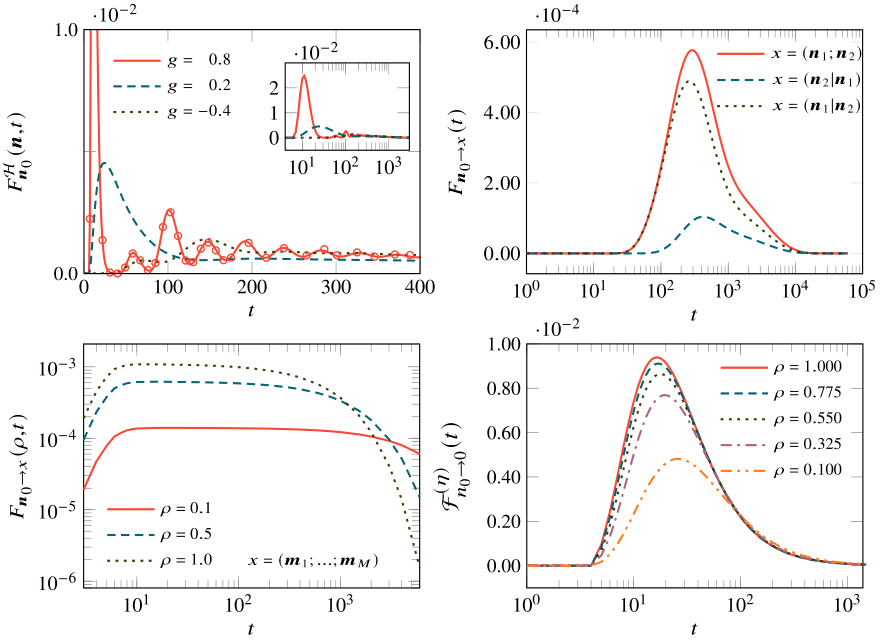Publications
Collective Foraging and Behavioural Heterogeneity in Ants: First-Passage Statistics with Heterogeneous Walkers in a Honeycomb Lattice
Authors: D.M., Pol Fernández-López, Frederic Bartumeus, Luca Giuggioli
Journal: In Review (arXiv pre-print)
Summary:
We have present a theoretical model to quantify the foraging behaviour of the ant species Aphaenogaster senilis in laboratory experiments. The model extends known theory on correlated random walks to account for the underlying Y-maze (honeycomb) lattice and on the fFPT of N independent random walkers, allowing the population to be heterogeneous in behaviour. We show that scouts outperform recruits in both search and exploration, give indication of a central placed foraging behaviour and highlight that the characteristic fFPT time of the foraging ants corresponds to the timescale related to the mode of the fFPT distribution rather than its mean.

Persistent and anti-Persistent Motion in Bounded and Unbounded Space: Resolution of the First-Passage Problem
Authors: D.M., Luca Giuggioli
Journal: New Journal of Physics, 26, (2024)
Summary:
Here we present an exact analytic framework to quantify search processes for the one-step memory extension of the random walk - the non-Markovian perisistent random walk. The theory is general and applicable in arbitrary dimension, with any boundary condition. This may find application in active matter, mathematical biology and movement ecology.

Multi-target search in bounded andheterogeneous environments: a lattice random walk perspective
Authors: Luca Giuggioli, Seeralan Sarvaharman, Debraj Das, D.M. and Toby Kay
Journal: To Appear in The Target Problem (Eds. D. S. Grebenkov, R. Metzler, G. Oshanin), Springer Nature (2024)
Summary:
Here we present a review of the latest advances in the field of search in heterogeneous and bounded lattice random walks. It was an absolute pleasure to work with such a lovely team.

Exact spatiotemporal dynamics of lattice random walks in hexagonal and honeycomb domains
Authors: D.M., Seeralan Sarvaharman and Luca Giuggioli
Journal: Physical Review E, 107, 054139, (2023)
Summary:
Here we develop a general theory to describe, exactly, diffusive processes when the underlying geometry is hexagonal. We consider two lattices, the hexagonal lattice (coordination number six) and the non-Bravias honeycomb lattice (coordination number three). Modelling random movement on hexagonal structures is a modelling tool used in varying applications from exciton transport on the surface of carbon nanotubes to animal foraging theory.
